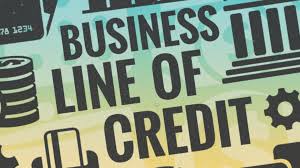Business Line of Credit: Everything You Need to Know

Introduction: Why Business Lines of Credit Are Critical for Success
Cash flow challenges affect nearly 60% of small businesses, creating obstacles that can prevent growth and limit opportunities. When faced with unexpected expenses or promising growth possibilities, having immediate access to capital can make the difference between success and stagnation.
A business line of credit offers the flexibility that traditional loans can’t match—allowing you to:
- Access funds exactly when needed
- Pay interest only on what you use
- Replenish your available credit as you repay
- Respond quickly to both challenges and opportunities
In this comprehensive guide, you’ll discover everything you need to know about business lines of credit—from basic concepts to strategic implementation. Whether you’re a startup founder, a growing small business, or an established company looking to optimize your financial toolkit, this guide will help you make informed decisions about this powerful financing option.
What Is a Business Line of Credit?
Definition and Core Characteristics
A business line of credit is a flexible financing arrangement that provides your business with access to a predetermined amount of capital that you can draw from as needed. Unlike traditional term loans that provide a lump sum upfront, a line of credit allows you to:
- Borrow up to your approved credit limit
- Pay interest only on the amount you actually use
- Replenish your available credit as you repay what you’ve borrowed
- Access funds repeatedly without reapplying
Think of it as a financial safety net that combines the accessibility of a business credit card with the more favorable terms and higher limits of a business loan.
Key Features That Define Business Lines of Credit
| Feature | Description |
|---|---|
| Revolving Credit | As you repay borrowed funds, your available credit is replenished, creating an ongoing funding source |
| Flexible Withdrawal | Draw funds when needed via checks, online transfers, or dedicated cards |
| Interest on Usage | Pay interest only on the amount borrowed, not on the entire credit limit |
| Variable Terms | Credit limits typically range from $10,000 to $250,000+ depending on business qualifications |
| Repayment Options | Various schedules available, often with minimum monthly payments |
| Purpose Flexibility | Can be used for virtually any legitimate business expense |
The Historical Evolution of Business Credit
The concept of business credit has evolved significantly over centuries:
- Pre-20th Century: Merchant credit between trusted trading partners formed the foundation of early business financing
- Early-Mid 20th Century: Formalized bank lending developed with standardized application processes and collateral requirements
- 1970s-1980s: Introduction of specialized small business lending products, including early versions of credit lines
- 1990s-2000s: Standardization of revolving business credit facilities with improved accessibility
- 2010s-Present: Digital transformation of business lending with online applications, rapid approvals, and integration with financial management software
This evolution reflects businesses’ consistent need for flexible capital access—a need that modern business lines of credit are specifically designed to meet.
![Timeline showing evolution of business credit through history]
How Business Lines of Credit Work
The Application and Approval Process
Securing a business line of credit involves several key steps:
Application Submission
- Complete the lender’s application form (online or in-person)
- Provide required financial documentation
- Submit business information including time in operation, revenue history, and ownership details
Underwriting and Evaluation
- Lender reviews your business’s financial health
- Assessment of credit scores (both business and personal)
- Analysis of cash flow and revenue stability
- Evaluation of existing debt obligations
Credit Limit Determination
- Based on your qualifications, the lender establishes your maximum borrowing amount
- Credit limits typically range from $10,000 for small businesses to $1 million+ for established companies
Terms and Agreement
- Review and acceptance of interest rates, fees, and repayment terms
- Completion of any collateral agreements (for secured lines)
- Finalization of documentation
Account Setup and Access
- Activation of your credit line
- Establishment of access methods (checks, cards, online banking)
The approval timeline varies significantly by lender type:
- Traditional banks: 2-4 weeks
- Online lenders: 24 hours to 1 week
- Credit unions: 1-3 weeks
- Fintech platforms: As quick as same-day approval
Drawing and Repaying Funds
Once your line of credit is established, the borrowing and repayment process works as follows:
Accessing Your Funds
You can typically draw from your credit line through:
- Online banking transfers
- Dedicated credit line checks
- Line-of-credit cards
- Mobile banking apps
Most lenders don’t restrict how you use the funds, allowing you to address various business needs such as:
- Inventory purchases
- Equipment repairs
- Marketing campaigns
- Payroll coverage during revenue gaps
- New hire onboarding
- Unexpected expenses
Repayment Structure
Repayment terms vary by lender but generally follow one of these models:
1. Monthly Minimum Payments
- Pay a minimum amount each month (often interest plus a percentage of principal)
- Flexibility to pay more than the minimum to reduce principal faster
- Interest calculated only on outstanding balance
2. Draw Period and Repayment Period
- Some lines have a set draw period (e.g., 1-5 years) when you can borrow freely
- Following the draw period, the line converts to a repayment period
- During repayment, no new draws are permitted, and you pay down the balance
3. Interest-Only Payments with Balloon
- Make interest-only payments during the term
- Pay the full principal at the end of the term
The Revolving Nature of Credit Lines
The defining characteristic of a business line of credit is its revolving structure:
- You begin with your full credit limit available
- As you draw funds, your available credit decreases
- As you make repayments, your available credit increases again
- This cycle can continue throughout the life of the credit facility
This revolving structure offers significant advantages over term loans for businesses with variable funding needs.
![Diagram showing the revolving nature of a business line of credit]
Types of Business Lines of Credit
Business lines of credit come in several varieties, each with distinct features designed for different business needs and qualifications.
Secured vs. Unsecured Lines
Secured Business Lines of Credit
A secured line requires collateral—specific assets pledged to the lender that can be claimed if you default on repayment.
Characteristics:
- Lower interest rates (typically 3-10%)
- Higher credit limits
- More accessible to businesses with shorter history or lower credit scores
- Longer repayment terms
Common Collateral Types:
- Real estate
- Equipment
- Inventory
- Accounts receivable
- Cash savings or deposits
- Investment accounts
Best For: Businesses seeking lower rates who have valuable assets and are comfortable pledging them as security.
Unsecured Business Lines of Credit
An unsecured line doesn’t require specific collateral but relies on your business’s creditworthiness and financial strength.
Characteristics:
- Higher interest rates (typically 8-24%)
- Lower credit limits
- Stricter qualification requirements
- Shorter repayment terms
- Faster approval process
Best For: Established businesses with strong credit profiles who prioritize speed and flexibility over rate optimization.
Traditional vs. Online Lenders
Traditional Bank Lines of Credit
Characteristics:
- Lower interest rates
- Higher credit limits
- More extensive documentation requirements
- Longer approval process
- Relationship-based lending approach
- May require in-person meetings
Advantages:
- Most cost-effective option for qualified businesses
- Potential for relationship benefits like fee waivers
- Higher credit limits for established businesses
Online/Alternative Lender Lines of Credit
Characteristics:
- Higher interest rates
- Streamlined application process
- Minimal documentation requirements
- Rapid approval (often within 24 hours)
- More accessible qualification criteria
- Fully digital experience
Advantages:
- Accessible to newer businesses and those with challenged credit
- Extremely fast funding when needed
- Integration with digital banking and accounting systems
Specialized Lines of Credit
SBA Lines of Credit (CAPLines)
The Small Business Administration offers several specialized lines of credit through their CAPLines program:
- Standard Asset-Based Line: Secured by accounts receivable, inventory, or equipment
- Contract Line: For contractors fulfilling specific contracts
- Seasonal Line: Designed for businesses with seasonal revenue patterns
- Builders Line: Specifically for construction businesses
Characteristics:
- Up to $5 million in credit
- Government guarantee reduces lender risk
- Lower interest rates than conventional options
- Longer application process
- Subject to SBA eligibility requirements
Industry-Specific Lines of Credit
Many lenders offer credit lines tailored to specific industries with unique cash flow patterns:
- Retail Inventory Financing: Specifically for purchasing inventory
- Healthcare Provider Lines: For medical practices managing insurance reimbursements
- Construction Lines: For contractors managing project-based cash flows
- Agricultural Lines: For seasonal farming operations
Comparing Your Options
| Credit Line Type | Typical Interest Rates | Typical Credit Limits | Approval Timeline | Best For |
|---|---|---|---|---|
| Secured Bank Line | 3-10% | $50,000-$5M+ | 2-4 weeks | Established businesses seeking lowest rates |
| Unsecured Bank Line | 8-20% | $10,000-$100,000 | 1-3 weeks | Businesses with strong credit needing flexibility |
| Online Secured Line | 7-17% | $25,000-$500,000 | 1-5 days | Growing businesses needing quick capital access |
| Online Unsecured Line | 10-80% | $5,000-$250,000 | 1-3 days | Startups or businesses prioritizing speed over cost |
| SBA CAPLines | 5-10% | Up to $5M | 30-90 days | Qualified small businesses willing to navigate SBA process |
Qualifying for a Business Line of Credit
Lender Evaluation Criteria
Lenders assess several key factors when determining whether to approve your application:
1. Credit Profile
Business Credit Score:
- Lenders typically look for scores above 75 (on a scale of 0-100) for the most favorable terms
- Scores are evaluated from business credit bureaus like Dun & Bradstreet, Experian Business, and Equifax Business
Personal Credit Score:
- For smaller businesses, owner’s personal credit often weighs heavily
- Traditional lenders typically prefer scores above 680
- Alternative lenders may approve with scores as low as 550, but with higher rates
2. Business Financial Health
Revenue History:
- Most lenders require minimum annual revenue of $100,000-$250,000
- Consistent or growing revenue patterns are viewed favorably
- Some alternative lenders focus primarily on revenue rather than credit scores
Cash Flow Analysis:
- Positive cash flow demonstrates ability to service debt
- Lenders examine debt service coverage ratio (DSCR)—typically seeking 1.25 or higher
- Seasonal businesses should highlight overall annual stability
3. Time in Business
Typical Requirements:
- Traditional banks: 2+ years in business
- Online lenders: 6 months to 1 year
- SBA programs: 2+ years generally preferred
4. Industry Risk Assessment
Lenders evaluate industries differently based on:
- Perceived stability
- Growth outlook
- Cyclical nature
- Regulatory environment
Currently Favored Industries (subject to change):
- Healthcare services
- Professional services
- Technology
- Essential retail
Higher Scrutiny Industries:
- Restaurants
- Hospitality
- Entertainment
- Seasonal businesses
Documentation Requirements
Be prepared to provide these essential documents:
Standard Requirements
- Business tax returns (past 2-3 years)
- Personal tax returns for all owners with 20%+ ownership
- Balance sheet and income statements (current and past 2 years)
- Bank statements (past 3-12 months)
- Business licenses and registrations
- Articles of incorporation or organization
Additional Documents Often Requested
- Accounts receivable aging report
- Accounts payable aging report
- Business debt schedule showing all existing obligations
- Profit and loss projections (especially for newer businesses)
- Personal financial statements for owners/guarantors
Improving Your Qualification Odds
If you’re concerned about approval, take these steps to strengthen your application:
Build and monitor your business credit score
- Establish trade lines with suppliers
- Register with business credit bureaus
- Maintain on-time payment history with all vendors
Organize and improve financials
- Clean up accounting records
- Reduce outstanding debt
- Improve cash flow management
- Separate personal and business finances
Consider starting smaller
- Begin with a modest credit line to establish a relationship
- Some lenders offer starter lines as low as $5,000-$10,000
Explore secured options
- Offering collateral significantly improves approval chances
- Consider accounts receivable or inventory as security
Prepare a strong business case
- Document specifically how the line will support growth
- Show detailed projections of how funding will improve cash flow
![Infographic showing qualification factors and their relative importance]
Strategic Applications
Optimal Uses for Business Lines of Credit
A business line of credit can be a powerful tool when deployed strategically. Here are the most effective ways to leverage this financing option:
1. Managing Cash Flow Fluctuations
Seasonal Business Stabilization
- Retail businesses can bridge slow periods between peak selling seasons
- Service businesses can maintain operations during cyclical downturns
- Agricultural enterprises can cover expenses before harvest income arrives
Example in Action: A landscaping company uses its credit line during winter months to maintain equipment, retain key staff, and prepare marketing campaigns for spring, then repays the line when revenue increases.
2. Capitalizing on Growth Opportunities
Inventory Management
- Purchase inventory in bulk to secure volume discounts
- Quickly restock fast-selling items to avoid stockouts
- Take advantage of limited-time supplier promotions
Expansion Initiatives
- Open new locations while maintaining adequate cash reserves
- Fund marketing campaigns to enter new markets
- Bridge gaps when scaling operations before revenue catches up
Example in Action: An e-commerce retailer uses its credit line to purchase triple its normal inventory before the holiday season, capturing sales that would have been lost due to stockouts, then repays the line in January when the inventory converts to cash.
3. Emergency Preparedness
Equipment Failures
- Immediately replace or repair critical equipment
- Avoid extended downtime and revenue loss
- Maintain operations while insurance claims process
Unexpected Expenses
- Cover unexpected tax obligations
- Address facility repairs or maintenance emergencies
- Manage crisis response without depleting cash reserves
Example in Action: A restaurant experiences a critical refrigeration system failure and uses its credit line to fund immediate replacement, avoiding inventory loss and prolonged closure while awaiting insurance reimbursement.
4. Strategic Timing of Major Purchases
Taking Advantage of Vendor Discounts
- Capture early payment discounts from suppliers
- Purchase equipment during end-of-year sales
- Negotiate better terms with immediate payment capabilities
Example in Action: A manufacturing business uses its credit line to take advantage of 2/10 net 30 terms (2% discount for paying within 10 days), effectively earning a 36% annualized return when the credit line costs only 9% annually.
When Not to Use a Business Line of Credit
While versatile, business lines of credit aren’t appropriate for all financing needs:
Avoid Using For:
Long-Term Capital Investments
- Major real estate purchases
- Large equipment with multi-year useful life
- Complete business acquisitions
Better Alternative: Term loans or SBA 7(a) loans with fixed rates and longer repayment periods
Covering Persistent Negative Cash Flow
- Using credit to mask fundamental business problems
- Repeatedly funding the same operational shortfalls
Better Alternative: Business restructuring, expense reduction, or revenue enhancement strategies
Owner Compensation or Distributions
- Taking draws or bonuses during cash-tight periods
- Funding personal expenses
Better Alternative: Establish sustainable owner compensation based on business profitability
Complementary Financing Strategies
Smart businesses often use lines of credit alongside other financing tools:
Credit Line + Term Loan Strategy
- Use term loans for specific long-term investments
- Reserve credit line for short-term and variable needs
- Maintain clearer separation of financing purposes
Credit Line + Business Credit Card Strategy
- Use credit cards for smaller, frequent purchases and to earn rewards
- Reserve credit line for larger needs and lower-interest borrowing
- Establish clear policies for which financing tool to use when
Credit Line + Factoring/AR Financing
- Factor specific invoices when cash is needed immediately
- Use credit line for needs not covered by outstanding invoices
- Create complementary cash flow solutions
Real-World Success Stories
Case Study 1: Retail Business Managing Seasonal Demand
Business Profile: Regional sporting goods retailer with 3 locations Annual Revenue: $3.2 million Challenge: Extreme seasonal fluctuations with 40% of annual sales occurring in a 10-week period
Solution Implemented:
- Secured a $350,000 business line of credit with inventory as collateral
- Interest rate: 7.5% variable (Prime + 2%)
- Used line strategically to:
- Pre-purchase seasonal inventory at volume discounts
- Increase staffing before peak season
- Launch targeted marketing campaigns before busy periods
Results:
- Increased inventory depth led to 22% sales growth
- Avoided $75,000 in stockout-related lost sales
- Captured early payment discounts saving $12,000 annually
- Maintained positive cash flow throughout the year
- Line utilization fluctuated between 0-85% based on seasonal needs
Key Takeaway: The revolving nature of the credit line perfectly matched the cyclical business model, enabling growth while minimizing interest costs.
Case Study 2: Manufacturing Business Expansion
Business Profile: Custom cabinet manufacturer Annual Revenue: $1.8 million Challenge: Growing order backlog but insufficient capacity to meet demand
Solution Implemented:
- Obtained $250,000 unsecured business line of credit
- Interest rate: 11.5% fixed
- Used line to:
- Purchase additional specialized equipment
- Hire and train three new craftspeople
- Increase raw materials inventory
- Bridge gap until new production capacity generated revenue
Results:
- Increased production capacity by 35%
- Reduced order fulfillment time from 8 weeks to 5 weeks
- Grew revenue by $420,000 in first year after expansion
- Repaid drawn amount within 10 months
- Maintained line for future opportunities and working capital needs
Key Takeaway: The flexibility of the credit line allowed the business to scale operations quickly without overcommitting to fixed debt, then rapidly repay as cash flow improved.
Case Study 3: Professional Services Firm Client Acquisition
Business Profile: Marketing agency specializing in healthcare clients Annual Revenue: $950,000 Challenge: Opportunity to pitch major hospital system requiring significant upfront investment in proposal development, specialized staff, and presentation materials
Solution Implemented:
- Utilized existing $100,000 unsecured line of credit
- Interest rate: 13.75% variable
- Drew $45,000 to:
- Hire specialized healthcare consultant for proposal
- Develop comprehensive presentation materials
- Create prototype campaign concepts
- Fund travel for in-person pitch meetings
Results:
- Won $340,000 annual contract with hospital system
- Client relationship generated positive cash flow within 60 days
- Repaid drawn amount within 90 days
- Established relationship led to referrals worth $150,000 in additional business
Key Takeaway: The credit line enabled the agency to invest in opportunity without hesitation, creating a significant return on the short-term funding.
![Success story visualization with key metrics and outcomes]
Advantages and Limitations
The Benefits of Business Lines of Credit
Business lines of credit offer several distinct advantages over other financing options:
1. Unmatched Flexibility
- On-demand capital access without reapplication
- Borrow only what you need, when you need it
- Purpose flexibility for virtually any business expense
- Adapt to changing circumstances without restructuring financing
2. Cost Efficiency
- Pay interest only on drawn funds, not entire credit limit
- Potential interest savings compared to term loans when used for short-term needs
- Minimize unnecessary debt by borrowing exact amounts needed
- Avoid prepayment penalties common with term loans
3. Cash Flow Optimization
- Smooth out revenue fluctuations without depleting cash reserves
- Maintain operating cash while financing growth initiatives
- Bridge timing gaps between expenses and income
- Preserve emergency funds for true crises
4. Business Credit Building
- Establish business credit history separate from personal credit
- Create positive payment history with consistent repayment
- Demonstrate creditworthiness to future lenders
- Build toward larger financing options as business grows
Potential Drawbacks to Consider
While powerful, business lines of credit do have limitations:
1. Cost Considerations
- Higher interest rates than some term loans, especially for unsecured lines
- Annual maintenance fees often $25-$500 depending on line size
- Origination fees typically 0.5%-1% of credit limit
- Variable rates that may increase over time
- Potential inactivity fees if line goes unused
2. Risk Factors
- Potential for overborrowing due to easy access
- Temptation to fund non-essential expenses
- Variable interest rates may increase unexpectedly
- Callable loans can be demanded for repayment at lender’s discretion
- Collateral loss risk with secured lines
3. Qualification Challenges
- Stringent requirements from traditional lenders
- Limited options for startups under 1-2 years in business
- Higher rates/lower limits for businesses with challenged credit
- Industry restrictions for certain business types
4. Limited Scale for Major Investments
- Not ideal for long-term capital needs
- May have insufficient limits for major expansions
- Shorter repayment terms than dedicated growth financing
- Higher cost than specialized financing for specific purchases
Comparative Analysis: Business Line of Credit vs. Other Financing Options
| Financing Type | Best For | Typical Cost | Flexibility | Speed to Funding | Repayment Structure |
|---|---|---|---|---|---|
| Business Line of Credit | Short-term needs, cash flow management, emergency funds | 7-25% APR | Very High | 1 day to 4 weeks | Revolving with minimum payments |
| Term Loan | Specific investments, equipment, long-term growth | 5-30% APR | Low | 1-6 weeks | Fixed monthly payments |
| SBA Loan | Major expansions, acquisitions, long-term investments | 5-10% APR | Low | 30-90 days | Fixed monthly payments |
| Business Credit Card | Small purchases, travel, earning rewards | 15-24% APR | Medium | Immediate | Revolving with minimum payments |
| Invoice Factoring | Immediate cash from outstanding invoices | 1-5% per month | Medium | 1-3 days | Automatic as customers pay invoices |
| Merchant Cash Advance | Quick funding for businesses with strong card sales | 20-150% APR equivalent | Low | 1-3 days | Daily percentage of card sales |
Managing Your Credit Line Effectively
Best Practices for Responsible Usage
Maximizing the benefits of your business line of credit while minimizing costs requires strategic management:
1. Establish Clear Usage Policies
- Define specific authorized purposes for credit line draws
- Create approval processes for accessing funds
- Document usage guidelines for all team members with access
- Set maximum draw amounts requiring additional approval
2. Monitor and Track Utilization
- Maintain dedicated spreadsheet or software tracking all draws and repayments
- Reconcile monthly statements promptly
- Calculate utilization ratio regularly (amount used ÷ total credit limit)
- Set alerts for high utilization (typically above 70%)
3. Implement Strategic Repayment Practices
- Pay more than minimum when cash flow allows
- Prioritize repayment when seasonal revenue increases
- Create repayment schedules aligned with business cycles
- Consider interest-only periods strategically during growth phases
4. Regular Review and Optimization
- Renegotiate terms annually as business strengthens
- Request credit limit increases before they’re urgently needed
- Shop competitive offers every 12-24 months
- Consider refinancing to secured line as collateral becomes available
Warning Signs of Problematic Usage
Watch for these red flags that may indicate unhealthy credit line management:
- Consistently maxed-out credit line for extended periods
- Using the line to cover basic operational expenses consistently
- Making only minimum payments for several consecutive months
- Frequent draws for unplanned expenses
- Using credit line for purposes counter to original strategy
- Cash flow not sufficient to make payments comfortably
Technology Tools for Credit Line Management
Leverage technology to optimize your credit line management:
Financial Management Software
- QuickBooks, Xero, FreshBooks: Track credit line as dedicated account
- Float, Pulse: Cash flow forecasting to predict line usage needs
- Divvy, Brex: Expense management integrated with credit facilities
Banking Features
- Automated alert systems for balance and payment notifications
- Scheduled transfers for consistent repayment
- Mobile apps for on-the-go monitoring and management
- Integration with accounting software for real-time tracking
Analytical Tools
- Dashboard solutions like Domo or Tableau for visualizing credit usage
- Financial ratio calculators to monitor debt service coverage
- Cash conversion cycle tools to optimize timing of credit usage
![Screenshot example of credit line management dashboard]
Modern Trends in Business Credit
Digital Transformation of Business Lending
The landscape of business lines of credit is evolving rapidly, driven by technology and changing market demands:
Online Application and Approval Processes
- Digital-only applications eliminating paperwork
- API-driven document collection pulling directly from accounting software
- Automated underwriting algorithms for faster decisions
- Video verification replacing in-person meetings
- Digital signature capture streamlining documentation
Integration with Business Systems
- Banking and accounting software integration for seamless transaction recording
- Cash flow forecasting tools predicting credit needs
- Automated draw triggers based on account balances
- Real-time utilization monitoring through dashboards
Alternative Underwriting Methods
- Cash flow-based lending prioritizing revenue over credit scores
- Bank account analysis using transaction data for decisions
- Non-traditional data points including online reviews and social sentiment
- Industry-specific benchmarking for more accurate risk assessment
Emerging Products and Innovations
Several innovative credit products are reshaping the business financing landscape:
On-Demand Lines of Credit
- Instant access through mobile applications
- Minute-by-minute interest calculation rather than daily or monthly
- Micro-draws as small as $50-$100
- Automated repayment options linked to revenue
Hybrid Financing Products
- Line of credit/term loan combinations allowing conversion between structures
- Revenue-based lines with payments that flex with business income
- Secured/unsecured hybrid options with tiered pricing based on available collateral
- Subscription-based credit access with flat monthly fees rather than interest
Specialized Industry Solutions
- E-commerce inventory lines tied directly to sales platform data
- Professional service retainer financing for project-based businesses
- SaaS company revenue financing based on recurring revenue metrics
- Healthcare-specific lines designed around insurance reimbursement cycles
Future Outlook for Business Lines of Credit
Looking ahead, several trends will likely shape the evolution of business lines of credit:
Increased Accessibility
- Lower barriers to entry for new and small businesses
- Reduced documentation requirements through open banking connections
- Faster approval timelines becoming standard across all lenders
- More options for credit-challenged businesses through alternative underwriting
Enhanced Customization
- Dynamic credit limits that adjust based on business performance
- Personalized repayment structures aligned with business cash flow patterns
- Industry-specific product features addressing unique sector challenges
- Bundled service offerings combining financing with business support
Technological Integration
- Embedded financing options within business software ecosystems
- AI-powered credit advisors suggesting optimal usage strategies
- Predictive analytics forecasting credit needs before they arise
- Blockchain-based credit facilities for enhanced security and efficiency
![Infographic showing the evolution of business credit from traditional to future models]
Frequently Asked Questions
Qualifying for a Business Line of Credit
Q: What credit score do I need to qualify for a business line of credit?
A: Credit score requirements vary by lender type:
- Traditional banks: Typically 680+ personal credit score and 75+ business credit score
- Online lenders: May approve with scores as low as 550, but with higher rates
- SBA-backed lines: Generally require 650+ personal credit scores
However, credit score is just one factor. Lenders also evaluate revenue, time in business, cash flow, and industry risk factors.
Q: Can startups qualify for business lines of credit?
A: Yes, but with limitations:
- Most traditional banks require 2+ years in business
- Some online lenders work with businesses after just 6 months
- Startup-focused options typically offer lower limits and higher rates
- Personal guarantees are almost always required for new businesses
- Business credit cards may be a more accessible alternative until established
Q: How much revenue do I need to qualify?
A: Revenue requirements vary widely:
- Traditional banks: Often require $250,000+ annual revenue
- Online lenders: Many work with businesses generating $100,000+ annually
- Minimum revenue options: Some specialized lenders work with businesses making as little as $50,000 annually
- Revenue consistency is often more important than absolute amount
Using Your Business Line of Credit
Q: What can I use a business line of credit for?
A: Business lines of credit can be used for nearly any legitimate business purpose, including:
- Inventory purchases
- Equipment repairs or upgrades
- Marketing campaigns
- Hiring and training staff
- Managing seasonal cash flow
- Unexpected expenses or emergencies
- Taking advantage of supplier discounts
- Bridging gaps between accounts receivable and payable
Most lenders place few restrictions on usage, though some specialized lines may have specific approved purposes.
Q: How does interest work on a business line of credit?
A: Interest on a business line of credit works as follows:
- You only pay interest on the amount drawn, not your entire credit limit
- Interest typically accrues daily on the outstanding balance
- Variable rates usually adjust based on an index (like Prime Rate) plus a margin
- Fixed rates remain constant throughout the draw period
- Payments generally include both principal and interest, though some lines offer interest-only periods
Q: What’s the difference between a business line of credit and a business credit card?
A: While both provide revolving credit, they differ in several key ways:
| Feature | Business Line of Credit | Business Credit Card |
|---|---|---|
| Credit Limits | Typically higher ($10,000-$500,000+) | Usually lower ($1,000-$50,000) |
| Interest Rates | Generally lower (7-25% APR) | Typically higher (15-24% APR) |
| Cash Access | Direct deposit to bank account | Cash advances with additional fees |
| Fee Structure | Annual maintenance fees common | Annual fees and transaction fees |
| Rewards | Rarely offer rewards programs | Often provide cash back or points |
| Acceptance | Not used for point-of-sale purchases | Accepted by merchants worldwide |
| Best Use Case | Larger funding needs and cash flow management | Daily expenses and purchase tracking |
Managing Costs and Terms
Q: How can I get the best interest rate on a business line of credit?
A: To secure the most favorable rates:
- Improve your credit score (both business and personal)
- Demonstrate strong revenue growth and positive cash flow
- Build a longer business history before applying
- Offer collateral to secure the line
- Shop multiple lenders to compare offers
- Negotiate based on competing offers or strong business performance
- Consider relationship banking where existing deposit accounts may improve terms
Q: What fees should I watch out for?
A: Common fees associated with business lines of credit include:
- Origination fees: Typically 0.5-1% of the credit limit
- Annual maintenance fees: Often $50-$500 depending on line size
- Draw fees: Some lenders charge per transaction (usually $10-$25)
- Inactivity fees: Charged if the line remains unused ($25-$100 monthly)
- Late payment fees: Typically $25-$50 or a percentage of the payment
- Prepayment penalties: Rare for lines of credit but check your agreement
- Over-limit fees: Charged if you exceed your credit limit
Q: Can I increase my credit limit over time?
A: Yes, most lenders offer credit limit increases based on:
- Consistent repayment history
- Growing business revenue
- Improved credit scores
- Longer relationship with the lender
- Additional collateral availability
Most lenders review accounts for potential increases every 6-12 months, but you can typically request a review at any time.
Technical and Operational Questions
Q: What’s the difference between a line of credit and a term loan?
A: The key differences include:
| Feature | Business Line of Credit | Term Loan |
|---|---|---|
| Funding Structure | Access funds as needed up to limit | Receive entire amount upfront |
| Interest Application | Only on amounts drawn | On entire loan amount |
| Repayment | Flexible minimums that revolve | Fixed payment schedule until repaid |
| Term Length | Typically renewable annually | Fixed term (1-10+ years) |
| Use Case | Ongoing needs and fluctuating expenses | Specific, one-time investments |
| Reusability | Revolving access as you repay | One-time funding requiring reapplication |
Q: Does applying affect my credit score?
A: Yes, but the impact varies:
- Most lenders perform a hard credit inquiry when you apply, typically causing a small, temporary drop in your credit score (usually 5-10 points)
- Some online lenders offer pre-qualification with soft pulls that don’t affect your score
- Multiple inquiries within a short period (14-45 days) are often counted as a single inquiry by credit scoring models
- The positive payment history from a well-managed line of credit typically outweighs the initial inquiry impact
Q: What happens if I miss a payment?
A: Consequences of missed payments typically include:
- Late fees assessed immediately
- Potential interest rate increases (default rates can be significantly higher)
- Negative reporting to business and personal credit bureaus
- Reduced credit limit or frozen access to additional funds
- Potential acceleration (entire balance becoming due)
Most lenders offer grace periods of 10-15 days before reporting late payments to credit bureaus.
Next Steps: Securing Your Business Line of Credit
Preparing for a Successful Application
Follow these steps to position your business for approval:
1. Assess Your Business’s Financial Health
Review your credit profile
- Check both personal and business credit reports
- Dispute any errors or outdated information
- Take steps to improve scores if needed
Organize financial documents
- Update balance sheets and income statements
- Prepare last 2-3 years of tax returns
- Compile recent bank statements
- Create cash flow projections
Evaluate collateral options
- Inventory assets with current market values
- Consider accounts receivable aging reports
- Document property or equipment ownership
2. Research and Compare Lenders
- Traditional banks if you have strong credit and established business
- Credit unions for potentially better rates and more flexible terms
- Online lenders for faster approval and less stringent requirements
- SBA lenders for government-backed options with favorable terms
Compare options based on:
- Interest rates and fee structures
- Credit limit potential
- Qualification requirements
- Application process and timeline
- Customer reviews and reputation
3. Prepare a Strong Business Case
- Document specific use plans for the credit line
- Create financial projections showing how the line will benefit operations
- Highlight business strengths that may not be apparent from financial statements
- Prepare explanations for any past credit issues or challenging periods
4. Submit a Complete Application
- Follow lender instructions precisely
- Provide all requested documentation upfront
- Be transparent about your business situation
- Respond quickly to any follow-up questions or requests
Taking Action Today
Ready to move forward with a business line of credit? Here are your immediate next steps:
- Check your business credit score through services like Nav, Dun & Bradstreet, or Experian Business
- Gather your financial documentation including tax returns, financial statements, and bank statements
- Research lenders that align with your business profile and needs
- Request quotes from 3-5 lenders to compare terms and options
- Apply to your top choices after careful consideration
Conclusion: Leveraging Flexible Capital for Business Success
A business line of credit represents one of the most versatile financial tools available to entrepreneurs and business owners. By providing on-demand access to capital with the flexibility to borrow only what you need, when you need it, this financing option can help you:
- Navigate cash flow challenges with confidence
- Seize growth opportunities without hesitation
- Manage seasonal fluctuations seamlessly
- Prepare for unexpected expenses
- Build business credit while maintaining operational flexibility
The modern business environment demands agility and resilience—qualities that a well-structured line of credit can significantly enhance. By understanding the options available, qualifying confidently, and managing your credit line strategically, you position your business for sustainable growth and long-term success.
We invite you to share your experiences with business lines of credit in the comments below, or contact us directly with any additional questions about finding the right financing solution for your unique business needs.
Recent Posts
- Geometry Regents Score Calculator (2025 NY Exam Tool)
- Algebra 2 Regents Score Calculator (2025 NY Exam Tool)
- Algebra 1 Regents Score Calculator (NY Regents Estimator)
- PreACT® Score Calculator (2025 Raw-to-Scaled Estimator)
- ACT® Score Calculator (2025 Raw-to-Scaled Score Tool)
- PSAT® Score Calculator (2025 Digital Exam Estimator Tool)
- AP® Music Theory Score Calculator (2025 Exam Estimator)
- AP® Art History Score Calculator (2025 Exam Estimator)
- AP® Spanish Literature Score Calculator (2025 Exam Tool)
- AP® Spanish Language Score Calculator (2025 Exam Tool)
- AP® Latin Score Calculator (2025 Exam Scoring Tool)
- AP® German Language Score Calculator (2025 Exam Tool)
- AP® French Language Score Calculator (2025 Exam Tool)
- AP® English Literature Score Calculator (2025 Exam Tool)
- AP® English Language Score Calculator (2025 Exam Tool)
Choose Topic
- ACT (17)
- AP (20)
- AP Art and Design (5)
- AP Chemistry (1)
- AP Physics 1 (1)
- AP Psychology (2025) (1)
- AP Score Calculators (35)
- AQA (5)
- Artificial intelligence (AI) (2)
- Banking and Finance (6)
- Biology (13)
- Business Ideas (68)
- Calculator (73)
- ChatGPT (1)
- Chemistry (3)
- Colleges Rankings (48)
- Computer Science (4)
- Conversion Tools (137)
- Cosmetic Procedures (50)
- Cryptocurrency (49)
- Digital SAT (3)
- Disease (393)
- Edexcel (4)
- English (1)
- Environmental Science (2)
- Etiology (7)
- Exam Updates (7)
- Finance (129)
- Fitness & Wellness (164)
- Free Learning Resources (208)
- GCSE (1)
- General Guides (40)
- Health (107)
- History and Social Sciences (152)
- IB (9)
- IGCSE (1)
- Image Converters (3)
- IMF (10)
- Math (44)
- Mental Health (58)
- News (9)
- OCR (1)
- Past Papers (450)
- Physics (5)
- Research Study (6)
- SAT (39)
- Schools (3)
- Sciences (1)
- Short Notes (5)
- Study Guides (28)
- Syllabus (19)
- Tools (1)
- Tutoring (1)
- What is? (312)
Recent Comments

“Namify Tech” Everything You Need to Know

“Corporate Online” Everything You Need to Know

“Corporate Entrepreneurship” Everything You Need to Know

“Sole Trader” Everything You Need to Know

Williams Syndrome - Everything you need to know

Kidney Stones Causes - Everything you need to know

Progressive Supranuclear Palsy (PSP) - Everything you need to know

